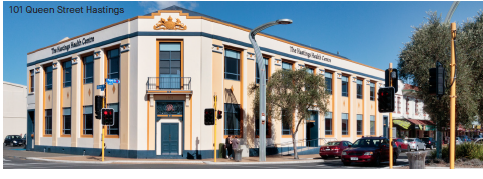Colliers Hawke’s Bay has kicked off 2021 with the largest January and February since inception in 2004.
The economic rebound experienced in the third and fourth quarters of 2020 post the lockdowns led to a rise in a number of local economic indicators, as a broad range of sectors reignited in an attempt to make up for the lost periods of activity. The rebound across many measures has been strong, particularly retail spending, residential and commercial real estate and export conditions.
This has buoyed local conditions, providing cautious confidence in occupier and investor decision-making. There are a number of underlying economic benefits the Hawke’s Bay enjoys including a growing population and employment opportunities which support commercial real estate activity. Investors are conscious that a rebound and resumption in more normal market conditions are eventuating due to the forced short-term nature of market disruption. As a result, investors are turning their focus towards the solid market conditions leading up to COVID-19 and reviewing the fundamentals. Investors are postulating that the current uncertainty created by COVID-19 could be accommodated in many circumstances, especially if incorporating longer-term projections.
Office
Despite caution in the office sector due to the rise in remote working, an active development sector is forecast over the next five years. Supporting some of the optimism is the economic and business performance outlooks. One measure to keep an eye on is the recent changes in the number of filled jobs reported by StatsNZ. It is still early days, and overall growth rates are still below COVID-19 levels, but some trends that show office occupier demand returning are appearing.
Industrial
Strong leasing market fundamentals, which have seen vacancy rates holding at low levels and upward pressure on rentals, have underpinned the positive sentiment towards the industrial sector amongst investors. The results of the latest Colliers investor sentiment survey found that investor confidence across the country was a net positive 45% (optimists minus pessimists).
Retail
There have been some clear winners in the retail sector after a challenging 2020. Latest data released by StatsNZ indicated core retail card spending in December 2020 totalled $6.68 billion, an increase of $1.14 billion from the previous month and 4.8% higher than December 2019.Consumable and durables recorded the biggest spending increase as Kiwi’s spent up strongly in liquor, supermarket and grocery stores. A new milestone was also recorded with spending on food and beverage services surpassing the $1 billion mark for the first time on record. The nonfood and beverage large format retail sector have also benefited, with strong spending in the furniture, electrical and hardware category, with spending up 12% compared to December 2019.
Economy is performing better than forecast
Action taken by the government and Reserve bank to insulate, as far as possible, NZ business from the impact of COVID-19 and the relative success the country has had in dealing with the virus has seen the economy outperforming original forecasts. Treasury now expects New Zealand’s GDP to grow by an average rate of 4.2% across 2021 and 2022 outpacing Australia (forecast 3.6%) and the USA (forecast 3.5%). While unemployment rates are expected to increase, they are much lower than original expectations.
The unemployment rate is forecast to peak at 7.8% as opposed to earlier predictions of 9.8%, according to latest Treasury forecasts. Government policies including business tax refunds, small business cashflow loans, wage support and mortgage holidays successfully limited job losses and company failures. The Reserve Banks quantitative easing and reduction and stability in the OCR until March 2021 has improved market liquidity, kept interest rates low and boosted investment confidence.



